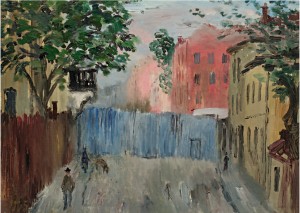While talking about the Russian art of the 1920s, we inevitably pay attention to its polyphony: the simultaneous existence of multiple points of view on what contemporary art should be like, what it should talk about, and what language it should use for this. The art of those times was a complex space marked by the coexistence of various models and forms. In other words, it was an area where various artistic languages were spoken whereby various projects that were parts of the new culture sought to assert themselves and defeat the influence of rival programs.
According to what is a widespread view today, the art of the twenties is confined to a conflict between the avant-garde movement and a trend that in 1922 was labeled as “heroic realism” but later received the name of “socialist realism.” The actual story was, however, more interesting and complicated.
The avant-garde movement, in traversing its historical path, opened up new areas of art and raised the status of art in contemporary society. It brought in its trail a gamut of developments in art. Avant-garde art itself underwent a change – it ceased to be a trend pursued by several groups of artists and became a cultural background of a whole generation and a form of art that students study at art schools today. However, in keeping with avant-garde logic, this new form of art subsequently began to reject its own self – while appreciating its achievements, it came to see them as obsolete. Each version of avant-garde art became an element of a motley pluralistic cultural scene and was seen by its narrow group of followers the only “correct” and “genuine” one. This marked the birth of post-avant-garde art, a polyphonic modernist culture.
As far as the idea of portraying facts from1920s society, in other words the early history of “social realism,” is concerned, the attempt to put this idea into practice by the Artists Association of Revolutionary Russia (AKhRR) was a very shallow effort, while the AKhRR’s attempts to please the new government failed to go down well with that government itself, some of whose members dismissed those attempts as clumsy. Leon Trotsky, for example, after visiting an exhibition of works devoted to the Red Army on March 19, 1923, wrote in the visitors’ book: “I hereby impose a five-year ban on the painting of generals.”



